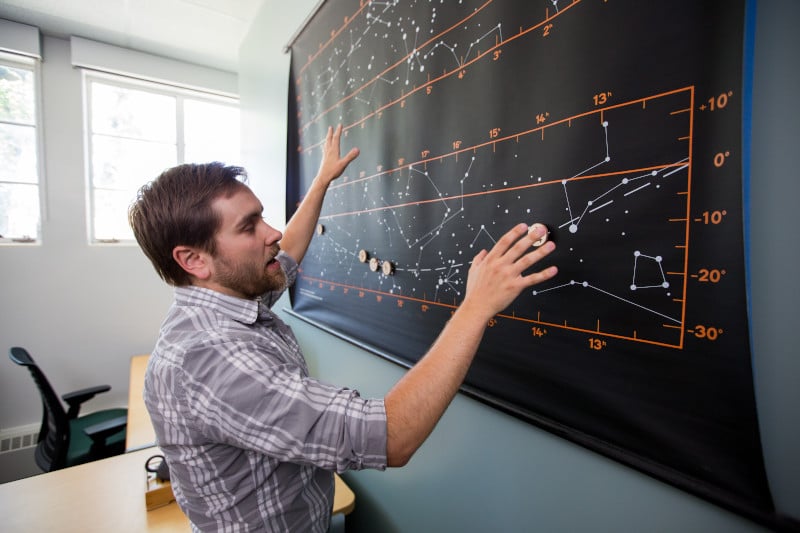A critical part of science is being able to convince funding organizations that a research project is worth their money.
It’s so important, in fact, that Ty Robinson, an assistant professor in the Department of Astronomy and Planetary Science at Northern Arizona University, added a class, called Writing a Fellowship Proposal, to the curriculum. The course gives graduate students the knowledge and experience necessary to write applications for grants and fellowships.
Thus far, it’s been well worth it; in the three years since the course’s inception, three students have been selected for the National Science Foundation’s Graduate Research Fellowship Program (GRFP), two earned an honorable mention, and this year, three students were selected to NASA’s FINESST program (Future Investigators in NASA Earth and Space Science and Technology).
“Many have never had the opportunity to think about how you would convince someone else that your idea is great and worthy of funding,” Robinson said of his students, most of whom are in Ph.D. programs at NAU and are preparing for careers in research. “It’s a lot of fun—and very rewarding—to see students move from writing in a traditional cut-and-dry academic style to learning to use language that can convince others of how novel an idea is or how important a proposed study is.”
The idea came out of a void Robinson felt from his own education.
“A pet peeve of mine for a while now is that graduate courses in the sciences often lack material on what it takes to be a professional scientist,” he said. “Courses don’t tend to cover peer review, how to deliver effective presentations and how to write a proposal. The idea of his course is really a win-win-win—the student learns a key skill, the student can receive funding for their ideas and the department and university can receive the prestige that comes with having graduate fellowship winners.”
The fall 2020 semester will be the fourth time he’s offered the class. The curriculum explores how scientists find funding to support their research ideas, how to read and interpret funding calls, how proposal language is different from the typical science writing style and proposal drafting and feedback. The class discusses the art of proposal writing as a skill to perfect, and then students get to put it into action during the class. In addition to the GRFP and the FINESST program, students have applied for the Amelia Earhart Fellowship and for fellowships from the Department of Energy, among other high-prestige national fellowships.
The syllabus evolves from year to year, and assignments vary. Robinson starts with a few general assignments that help train students to read funding calls and write in the proposal style. From there, the assignments are geared toward each student’s specific application.
“Students work to come up with an original idea and then work to write the various required components of the fellowship they will apply for,” Robinson said. “The collective class provides feedback at all stages, from idea origination to draft proposals to running a mock funding panel for the near-final proposal.”
It’s not just classmates providing feedback either. The mock funding panels are made up of faculty members and other graduate students, many of whom have sat on committees and applied for many grants themselves, and they offer critiques and insight into each application. Students who have come out of the class and won fellowships say having that feedback from experienced voices made their applications much stronger.
“I took the class my first semester at NAU, and I mostly watched my peers, who were the second class of students to go through the seminar and first to go through the official course, as they went through the process,” said Schuyler Borges, a second-year astronomy Ph.D. student who won the GRFP this year. “I think this helped tremendously because I got to see how their proposals developed and what the process was like even though I wasn’t submitting that year.”
Read more about the research of Borges, Jay Kueny and Colin Chandler, students who earned the GRFP after taking the Writing for a Fellowship class.
Heidi Toth | NAU Communications
(928) 523-8737 | heidi.toth@nau.edu




